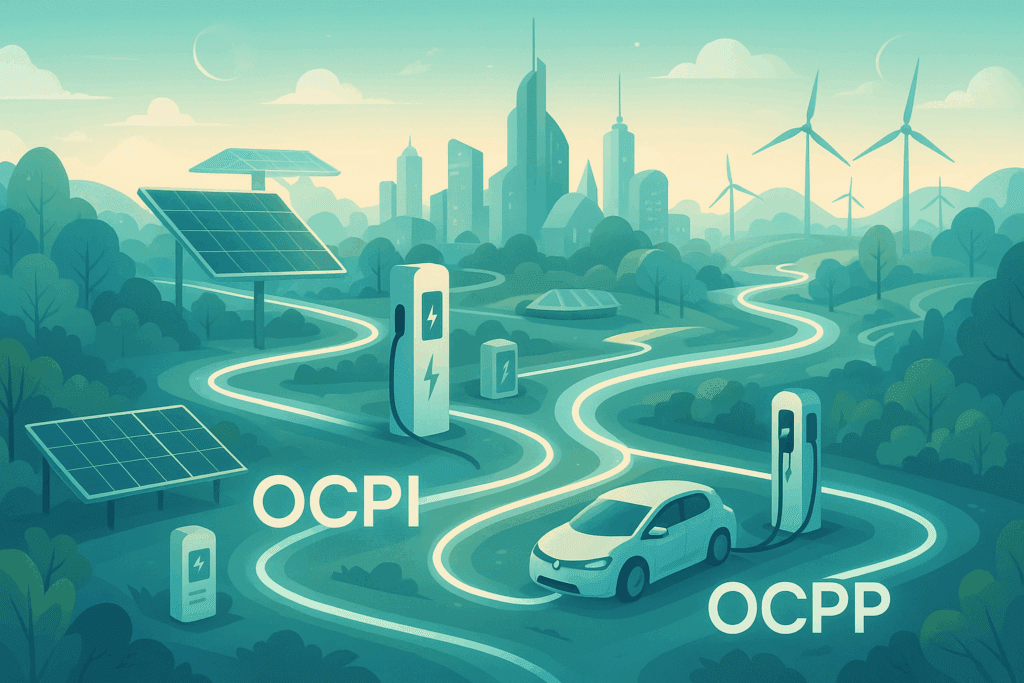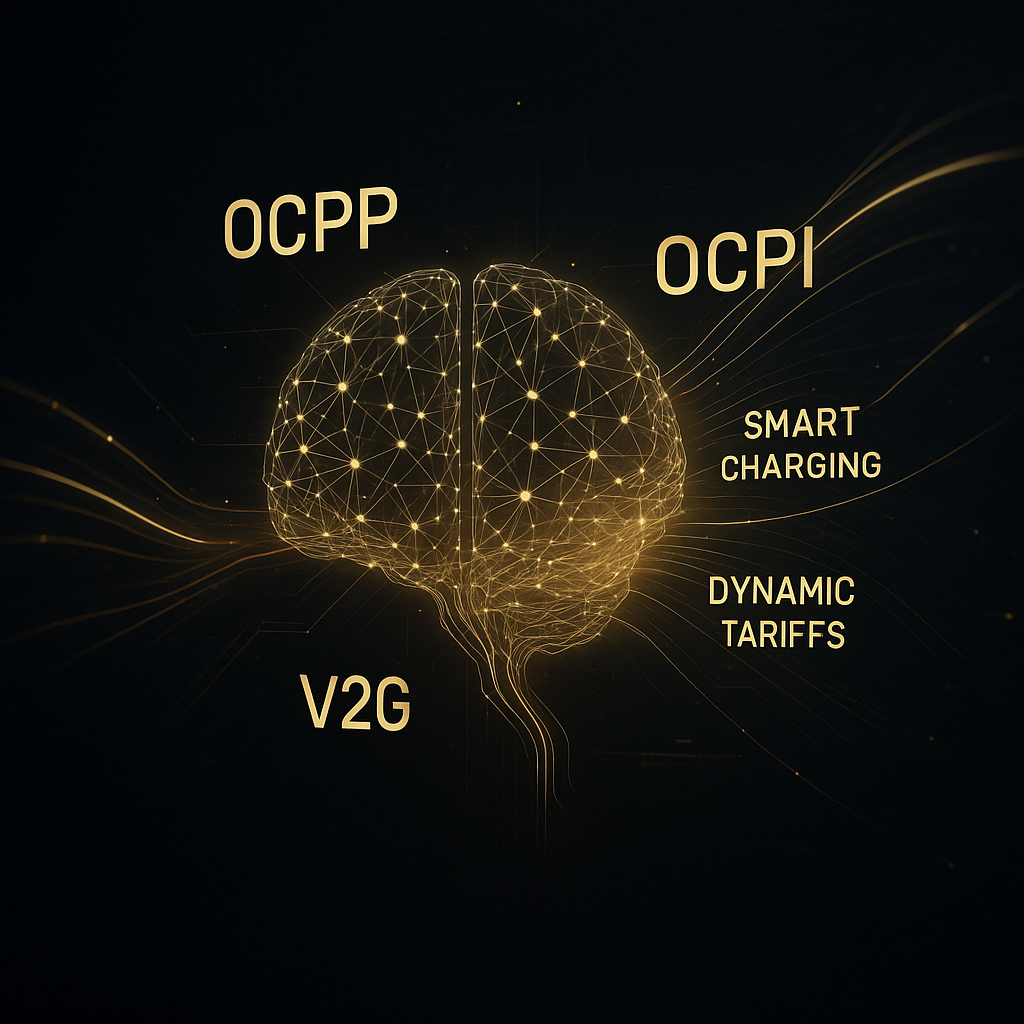Why open standards like OCPP and OCPI are essential for the future of EV charging infrastructure
In the rapidly evolving world of electric mobility, interoperability is no longer a luxury, it’s a necessity. Open standards such as the Open Charge Point Protocol (OCPP) and the Open Charge Point Interface (OCPI) play a crucial role by enabling standardized communication between various systems and stakeholders within the EV ecosystem.

The Power of Open Standards
Open standards offer numerous benefits for both operators and end-users:
- Flexibility: Charging stations from different manufacturers can be easily integrated, reducing dependence on a single vendor.
- Future-Proofing: Standardized communication protocols allow for updates and upgrades without the need for complete system replacements.
- Cost Savings: Reduced reliance on specific vendors leads to more competitive pricing and lower operational costs.
OCPP: The Backbone of Charging Station Communication
OCPP is designed to provide a uniform method of communication between charging stations and central systems, regardless of the manufacturer. The latest version, OCPP 2.0.1, makes it anable to introduce advanced features such as:
- Plug & Charge (ISO 15118): Enables automatic authentication and payment as soon as an EV is connected, eliminating the need for cards or apps.
- Enhanced Security: Built-in security protocols protect against cyber threats.
- Device Management: Simplifies the installation, configuration, and maintenance of charging stations, including support for remote firmware updates.
- User Interface: Supports multilingual displays and provides real-time information to users, enhancing accessibility and user-friendliness.
These new features not only improve the user experience but also simplify operations and increase efficiency for charging network operators.
OCPI: Seamless Roaming and Data Exchange
OCPI facilitates data exchange between e-Mobility Service Providers (eMSPs) and Charge Point Operators (CPOs), granting EV drivers access to a wide network of charging stations. The recent version, OCPI 2.3.0, introduces:
- EU AFIR Compliance: Meets the requirements for data exchange with national access points.
- Extensibility: Offers possibilities for custom extensions, allowing market participants to implement specific functionalities that align with their business models.
- Direct Payment Module: Enables direct payments without the involvement of an eMSP.
- These enhancements lead to a better charging experience for both operators and users.
EVesto’s Commitment to Open Standards
At EVesto, we strongly believe in the power of open standards. Therefore:
- We fully support OCPP 1.6 and largely support 2.0.1, ensuring our customers benefit from the latest functionalities.
- We are prepared for the implementation of OCPI 2.3, enabling seamless roaming and data exchange.
- We actively share our knowledge and experience within the industry to promote the adoption of open standards.
By building on open standards, we ensure our customers are not tied to outdated technology and are always ready for the future.
The Future of EV Charging Infrastructure
The adoption of open standards like OCPP and OCPI is essential for the continued growth and development of EV charging infrastructure. They provide the flexibility and scalability needed to meet the increasing demand for electric mobility.
Curious about how EVesto can future-proof your charging infrastructure? We are happy to inform you about the possibilities through a clear demo.

